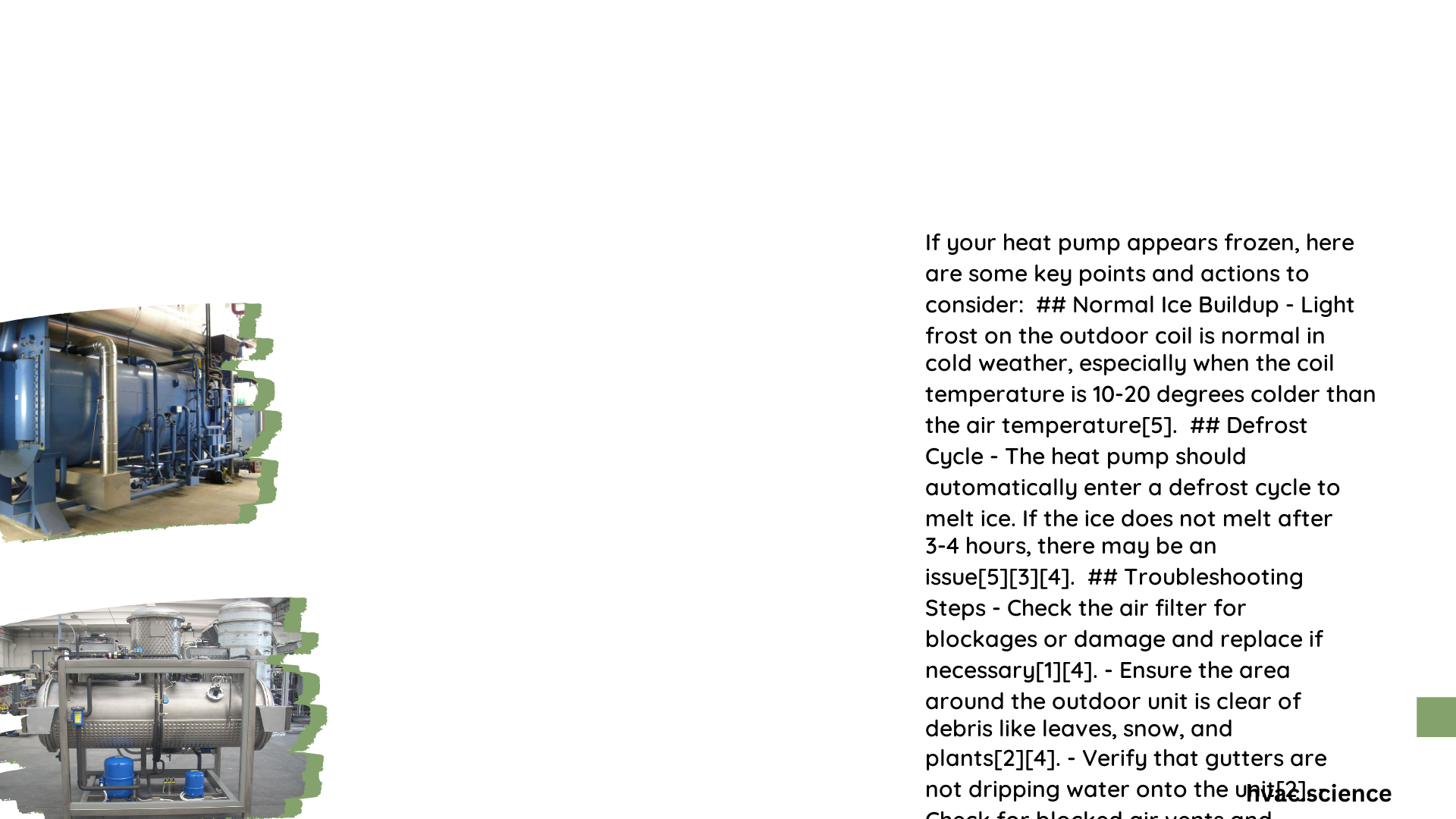A frozen heat pump can significantly impact your home’s heating efficiency and comfort. When a heat pump looks frozen, it’s often due to ice buildup on the outdoor unit, which can stem from various factors including environmental conditions, system malfunctions, or maintenance issues. Understanding the causes, solutions, and prevention methods for a frozen heat pump is crucial for maintaining optimal performance and avoiding costly repairs.
What Are the Signs of a Frozen Heat Pump?
Identifying a frozen heat pump is the first step in addressing the issue. Here are the key indicators:
- Visual Ice Formation: The most obvious sign is visible ice or frost on the outdoor unit, particularly on the coils and fins.
- Reduced Airflow: If you notice weak air coming from your vents, it could indicate that your heat pump is struggling due to ice buildup.
- Unusual Noises: Clicking, hissing, or rattling sounds may suggest that ice is interfering with the unit’s normal operation.
- Decreased Heating Performance: A noticeable drop in heating efficiency often accompanies a frozen heat pump.
Why Does a Heat Pump Freeze Up?

Several factors can contribute to a heat pump freezing:
- Low Outdoor Temperatures: When temperatures drop below 32°F (0°C), ice formation becomes more likely.
- High Humidity: Damp conditions increase the risk of frost accumulation on the outdoor coil.
- Malfunctioning Defrost Cycle: If the defrost mechanism fails, ice can build up unchecked.
- Refrigerant Issues: Low refrigerant levels can cause the evaporator coil to ice up more frequently.
- Poor Airflow: Restricted airflow due to dirty filters or blocked vents can lead to freezing.
How Can You Troubleshoot a Frozen Heat Pump?
Follow these steps to diagnose and potentially resolve the issue:
- Visual Inspection
- Check for ice or frost on the outdoor unit
-
Observe if the defrost cycle is active and effective
-
Verify Defrost Cycle Operation
- Manually activate the defrost cycle if possible
-
Monitor the unit to ensure ice melts during defrost
-
Check Refrigerant Levels
- Use a refrigerant gauge to measure pressure
-
Ensure levels are within the manufacturer’s specifications
-
Assess Airflow
- Clean or replace air filters
- Clear any obstructions around the outdoor unit
-
Verify that supply and return vents are unblocked
-
Inspect Sensors and Controls
- Check defrost sensors for proper function
-
Verify that the control board is operating correctly
-
Professional Evaluation
- If issues persist, consult an HVAC professional for a thorough diagnosis
What Is the Role of the Defrost Cycle in Preventing Freezing?
The defrost cycle is crucial in preventing ice buildup:
- Purpose: Melts ice and frost from the outdoor coil
- Duration: Typically lasts 10-15 minutes
- Frequency: Varies based on conditions, from every 30-90 minutes in cold weather
- Methods:
- Reverse Cycle Defrost: Reverses refrigerant flow to heat outdoor coil
- Electric Heat Defrost: Uses auxiliary heat strips to maintain indoor comfort
| Defrost Method | Efficiency | Cost | Effectiveness |
|---|---|---|---|
| Reverse Cycle | High | Low | Very Good |
| Electric Heat | Lower | Higher | Good |
How Can You Prevent Your Heat Pump from Freezing?
Proactive measures can help avoid freezing issues:
- Regular Maintenance: Schedule annual professional inspections and tune-ups.
- Clean Filters: Replace or clean air filters monthly during peak usage.
- Clear Debris: Keep the area around the outdoor unit free of leaves, snow, and debris.
- Monitor Refrigerant: Have a professional check refrigerant levels annually.
- Proper Installation: Ensure the outdoor unit is level and elevated above potential snow accumulation.
- Upgrade Controls: Consider installing a smart thermostat for more efficient operation.
When Should You Call a Professional for a Frozen Heat Pump?
While some troubleshooting can be done by homeowners, certain situations require professional intervention:
- Persistent freezing despite basic troubleshooting
- Suspected refrigerant leaks
- Electrical or mechanical failures
- Unusual noises or smells from the unit
- Significant decrease in heating or cooling performance
By understanding the causes of heat pump freezing and taking preventive measures, you can maintain your system’s efficiency and extend its lifespan. Regular maintenance and prompt attention to any signs of freezing will help ensure your heat pump operates optimally throughout the winter months.
References:
1. Energy Vanguard: What Happens to the Frost on My Heat Pump?
2. SuperTech HVAC: What To Do If You Got A Frozen Heat Pump?
3. Acker Heat & Cool: Heat Pump Frozen Up? Here’s What You Should Do.
